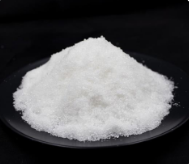Description:
Phenobarbital, an organic compound with the chemical formula C12H12N2O3, is listed as the second class of psychotropic drugs under control.Phenobarbital is a long-acting barbiturate whose central inhibitory effect varies with dose. It has sedative, hypnotic and anticonvulsant effects. It can also be antiepileptic, and has good effect on grand seizure, localized seizure and continuous state of epilepsy. Poor efficacy for minor epileptic seizures; However, it is often ineffective for psychomotor seizures, and may aggravate the seizures when treated with this drug alone. It can also enhance the action of antipyretic and analgesic drugs, induce the activity of liver microsomal glucuronide transferase, promote the binding of bilirubin and glucuronic acid, reduce the concentration of plasma bilirubin, and treat neonatal hyperbilirubinemia (cerebral nuclear jaundice).
Application:
Phenobarbital is a barbiturate sedative and sleeping pill. Clinical use: ① sedation: such as anxiety, irritability, hyperthyroidism, hypertension, functional nausea, children's pylorospasm and other diseases; ② Hypnosis: occasionally used for refractory insomnia, but often wake up after fatigue, lethargy and other aftereffects; ③ Anti-convulsion: commonly used against central stimulant poisoning or convulsion caused by high fever, tetanus, encephalitis, cerebral hemorrhage and other diseases; ④ Anti-epilepsy: for the treatment of grand mal seizures and partial seizures, the effect is fast, and it can also be used for epileptic status; ⑤ Administration before anesthesia; ⑥ It is used with antipyretic and analgesic drugs to enhance its effect; ⑦ Treatment of neonatal hyperbilirubinemia.
 call us :
call us :  send a message :
send a message : 



























 online service
online service +8613866722531
+8613866722531

 +8613866722531
+8613866722531